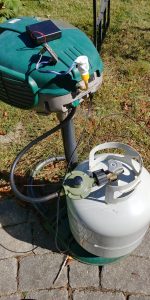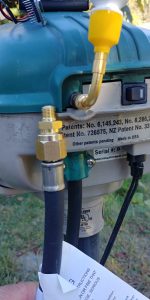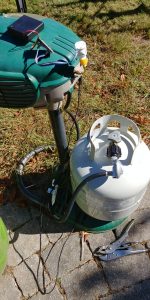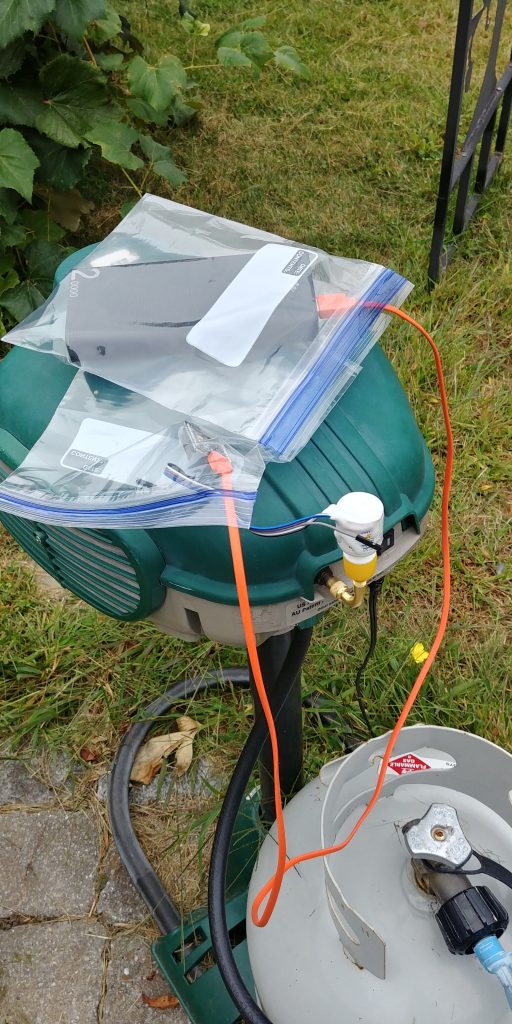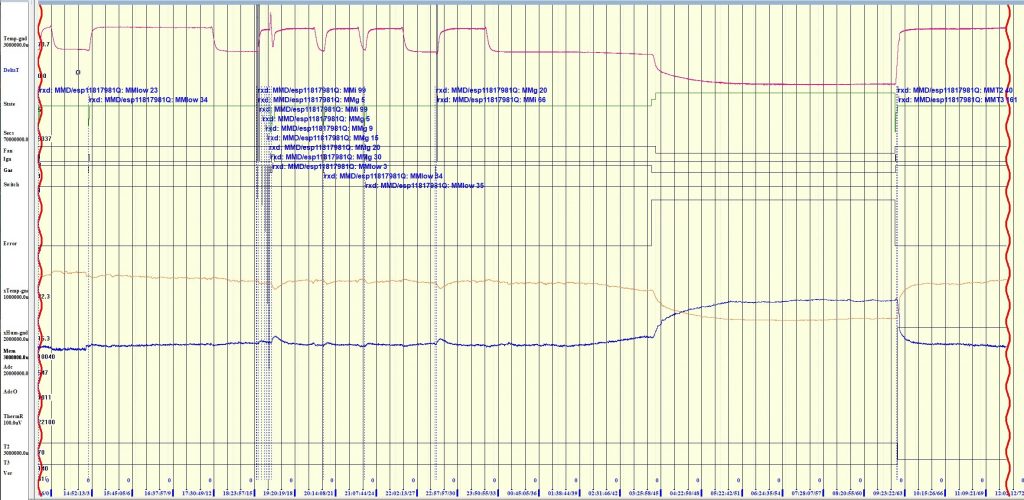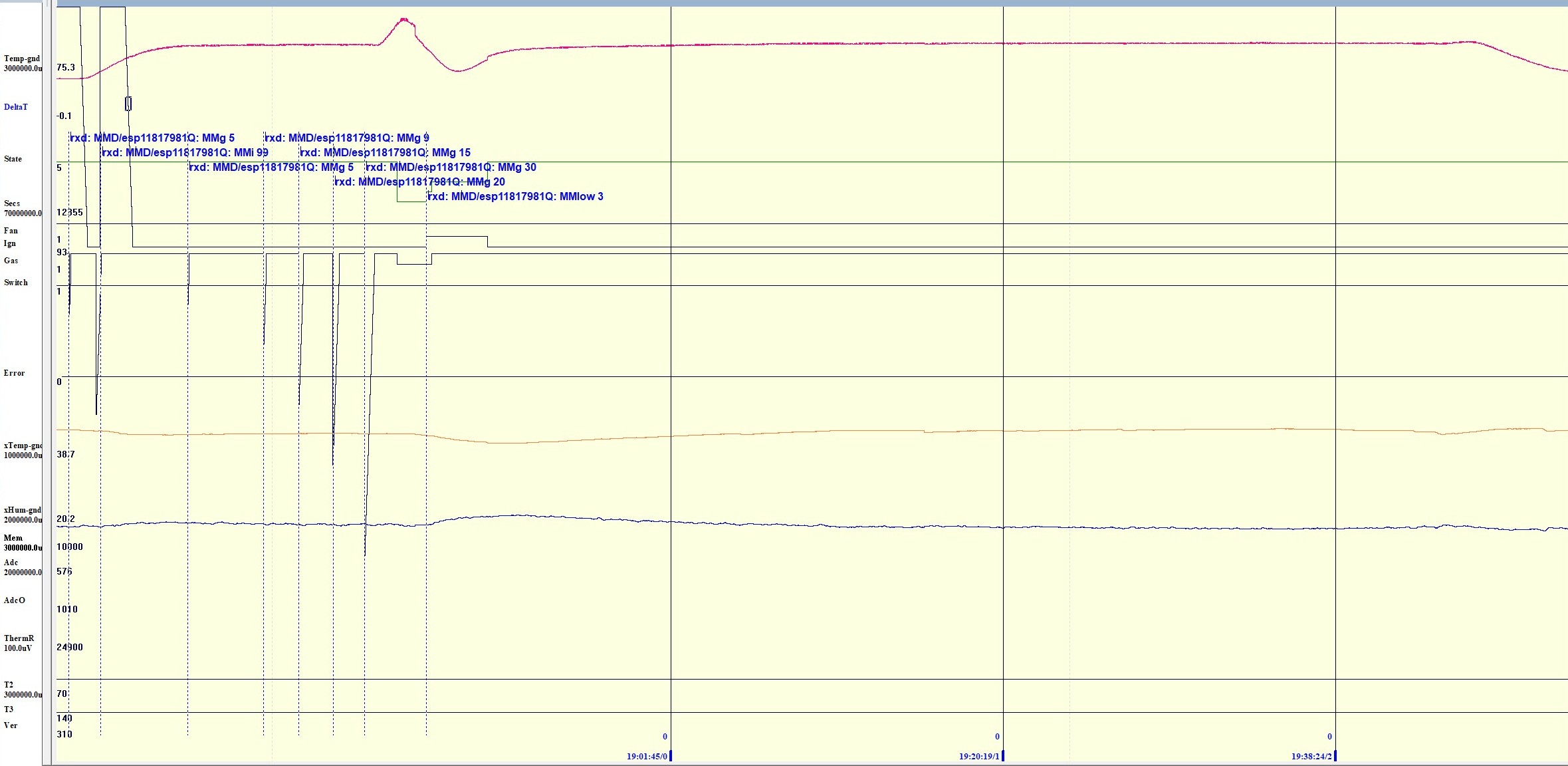Last week I wrote about restarting my venerable 2002 Mosquito Magnet Defender and discovering that the igniter was not working. I compared the old with a new one, and they measured identically 1 to 1.5 Ohms when cold. Well, I finally received a new 12 volt deep cycle battery and connected it to the old igniter, and it got hot. This means the problem was in the Defender’s or the igniter’s connector. Another point of failure. I thought I had sprayed these connectors with DeOxit, but I can’t find a record of it, so maybe not.
The igniter looked hotter than I have seen in the Defender. This makes some sense because the Defender uses a 50 foot low voltage line to connect its ac transformer to the controller, which then uses a full-wave bridge rectifier with no filter capacitors to provide a current limited rectified AC heating waveform. When initially cold, and drawing max current, the igniter pulls the rectified waveform down to about 7 volts, which is not enough to disrupt the 5v supply. The voltage rises to about 10 volts when hot. The 12 volt igniter never gets 12 volts. The impedance of the transformer and the 50 foot cable is part of the Defender’s design, which i had not appreciated until now. Very clever.
The Arduino project designer has reported that the soft start modification proposed to address his igniter reliability problem has worked out well, and that he has had many cycles of operation without a failure. With this news, and the belief that my igniter had failed, I modified the NodeMCU software to implement an igniter soft start, just a few more lines of code. I believe this is a really good idea, because I have gone through several igniters, although their failures have been related to rapid restart cycles caused by other unrelated trap faults (e.g., intermittent on/off switch).
But now, with a connector issue lurking, a nagging doubt has formed. It has to do with dry circuit contacts. As oxidation forms on an open switch contact, it is helpful to have a significant potential (voltage) between the contacts to break down the new oxidation layer and make a good connection. Relay and switch contacts that do not require this voltage are called “dry contacts.” They must not oxidize (a la gold). It is easier to just seal the contact and add some mercury, as in an old fashioned thermostat. Now, think of a connector with no current flowing (e.g., the igniter connector), but subject to temperature and humidity fluctuations. The resulting contact movement allows an opportunity for surface oxidation at the various potential points of contact as they shift around. When the voltage is switched on, if the layer is too thick, the oxidation does not break down, and the desired current does not flow. I believe this is what happened to my Defender.
The traditional way to deal with oxidation is with hard starts: full potential applied to break down any oxidation or other insulating layer. So a soft start would seem contrary to that principle, and improve the life of the igniter at the cost of making the oxidation problem worse.
The soft start desired is that the igniter warm up slowly so that the temperature and the resulting expansion is uniform throughout to reduce stress on the heating element. Traditionally, soft starts are accomplished by slowly raising the voltage, as in slowly turning up the voltage knob on an autotransformer (e.g., Variac). However, pulse width modulation (PWM) rapidly switches the full potential on and off. The desired percentage is the on time to period ratio. Slowly increasing this percentage provides a soft start while applying full potential with each pulse. This might even improve the oxidation punching characteristics, although the unfiltered AC waveform might do the same thing already. On the other hand, the large inrush current when cold might cause other problems in the igniter, but this current is already somewhat limited by the original Defender design.
It seems that this new approach should be tested and deployed, however, it is peak mosquito season, and the Defender is busy. I do have a spare Liberty that is sitting idle. Do I dare modify the Liberty to make an IOT Defender plus? This would have the additional benefit of being helpful to those Liberty owners experiencing issues. Stay tuned.

